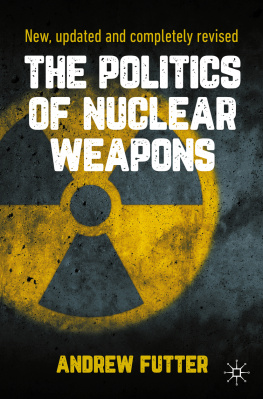Charles River Editors provides superior editing and original writing services across the digital publishing industry, with the expertise to create digital content for publishers across a vast range of subject matter. In addition to providing original digital content for third party publishers, we also republish civilizations greatest literary works, bringing them to new generations of readers via ebooks.
Sign up here to receive updates about free books as we publish them , and visit Our Kindle Author Page to browse todays free promotions and our most recently published Kindle titles.
Introduction

A British machine gun and crew
The Weapons of World War I
God would never be cruel enough to create a cyclone as terrible as that Argonne battle. Only man would ever think of doing an awful thing like that. It looked like the abomination of desolation must look like. And all through the long night those big guns flashed and growled just like the lightning and the thunder when it storms in the mountains at home. And, oh my, we had to pass the wounded. And some of them were on stretchers going back to the dressing stations, and some of them were lying around, moaning and twitching. And the dead were all along the road. And it was wet and cold. And it all made me think of the Bible and the story of the Anti-Christ and Armageddon. And I'm telling you the little log cabin in Wolf Valley in old Tennessee seemed a long long way off. - Alvin C. York
World War I, also known in its time as the Great War or the War to End all Wars, was an unprecedented holocaust in terms of its sheer scale. Fought by men who hailed from all corners of the globe, it saw millions of soldiers do battle in brutal assaults of attrition which dragged on for months with little to no respite. Tens of millions of artillery shells and untold hundreds of millions of rifle and machine gun bullets were fired in a conflict that demonstrated mans capacity to kill each other on a heretofore unprecedented scale, and as always, such a war brought about technological innovation at a rate that made the boom of the Industrial Revolution seem stagnant.
Since the industrial revolution, arms and materiel output had increased by orders of magnitude, as had the quality and uniformity of the products. Several developments had already taken place in the years building up to the conflict, stepping stones towards the vast escalation in military innovation which took place immediately prior to and during World War I. Chief among these was the invention of smokeless gunpowder, which took place concurrently among several powers between 1890 and 1905. This was a crucial development, as it eliminated the literal fog of war which in vast quantities obscured the battlefield entirely and on an individual level both gave away the position of marksmen and made it impossible for them to fire accurately unless they moved away from their own smoke-cloud. Further innovations included the adoption into service of the first belt-fed machine guns, predecessors of those which would wreak such slaughter in the trenches, and the development of cannon which did not roll backwards after each shot as 19th century pieces did, but remained fixed in place.
The arms race before the war and the attempt to break the deadlock of the Western and Eastern Fronts by any means possible changed the face of battle in ways that would have previously been deemed unthinkable. Before 1914, flying machines were objects of public curiosity; the first flights of any account on rotor aircraft had been made less than 5 years before and were considered to be the province of daredevils and lunatics. By 1918, all the great powers were fielding squadrons of fighting aircraft armed with machine-guns and bombs, to say nothing of light reconnaissance planes. Tanks, a common feature on the battlefield by 1918, had not previously existed outside of the realm of science fiction stories written by authors like H.G. Wells. Machine guns had gone from being heavy, cumbersome pieces with elaborate water-cooling systems to single-man-portable, magazine-fed affairs like the Chauchat, the Lewis Gun and the M1918 BAR. To these grim innovations were added flamethrowers, hand grenades, zeppelins, observation balloons, poison gas, and other improvements or inventions that revolutionized the face of warfare.
These technological developments led to an imbalance. Before the introduction of the man-portable light machine gun (which took place in the second half of the war), not to mention tanks (which also joined the fight late in the game), defensive firepower vastly outweighed offensive capability. Massed batteries of artillery, emplaced heavy machine guns, barbed wire entanglements, and bewildering fortifications meant that ground could not be taken except at incredible cost. This led to the (somewhat unjustified) criticism famously leveled at the generals of World War I that their soldiers were lions led by donkeys. Certainly, every army that fought in the Great War had its share of officers, at all levels of command, who were incompetent, unsuitable, foolish, or just plain stupid, but there were plenty of seasoned professionals who understood their job and did it well. The main problem facing commanders in the war was that there was such a bewildering array of new armaments, with such vast destructive potential, that previous military doctrines were virtually useless. Cavalry, which had been expected to play a major role both as reconnaissance and as mounted infantry, operating in much the same way as airborne and mechanized troops would later to rapidly outflank enemy positions, quickly proved useless. Frontal infantry assaults were cut to shreds by enemy defensive fire, but there seemed to be no major alternative. Ground had to be taken, even if at great cost, and to do so, more destructive weapons were devised, tested and deployed.
As a result, World War I was the first truly industrial war, and it created a paradigm which reached its zenith with World War II and towards which virtually all equipment, innovation and training were dedicated throughout the Cold War and the remainder of the 20th century. To this day, modern warfare remains synonymous with tanks and mass infantry battles, although a confrontation of this nature has not occurred (except briefly during Operation Desert Storm) since World War II.
The Weapons of World War I analyzes the technological advancements in weaponry that produced the deadliest conflict in history up to that time. Along with pictures of important people, places, and events, you will learn about the weapons of World War I like never before, in no time at all.
Chapter 1: Up Close and Personal
Anyone with even a passing knowledge of military affairs understands that while they often lacked the glamour of cavalry and the raw killing power of artillery, infantry was the backbone of every army. Artillery could deny ground, while cavalry and tanks could take it, but only the infantry could hold it, and likewise only the infantry could operate, to an extent, independent of its support arms. Accordingly, the standard-issue weapons carried by conventional infantry in World War I remained crucial for the main belligerents in World War I, including the British Empire, Germany, France, Austria, Russia, Italy, and the United States.



















